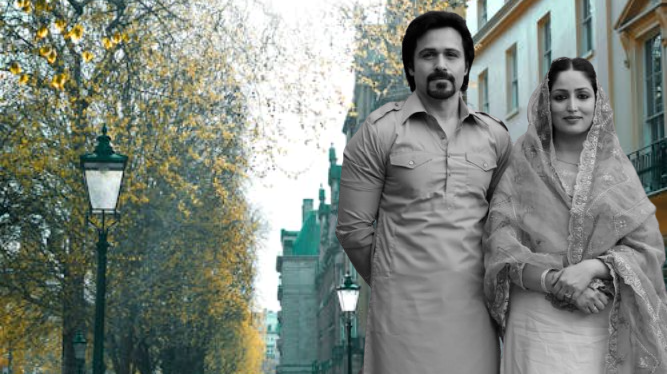Haq Movie 2025 Filmyzilla Review Details

Haq (2025) Review: Director’s Vision and Creative Style
You know that rare film where direction feels like a quiet hand guiding every emotion? Haq is exactly that. As a 15-year veteran reviewer who’s covered hundreds of films and studied directors’ language closely, I felt Suparn Varma’s choices here were precise, responsible and emotionally measured.
Quick Context
Released on November 7, 2025, Haq tackles themes of women’s rights, personal law and justice, drawing inspiration from the Shah Bano case. The film stars Yami Gautam Dhar and Emraan Hashmi, with a screenplay by Reshu Nath and music by Vishal Mishra.
| Role | Person |
|---|---|
| Director | Suparn Varma |
| Writer | Reshu Nath |
| Producers | Vishal Gurnani, Juhi Parekh Mehta, Harman Baweja |
| Music | Vishal Mishra |
| Lead Actors | Yami Gautam Dhar, Emraan Hashmi |
Insight: Varma chose a grounded cast and a restrained crew to serve authenticity over spectacle.
Takeaway: The film’s team signals a director-first approach: simplicity that demands focus on story and actors.
Directorial Choices — What Varma Does
Varma’s direction is deliberate. He avoids ornamentation and trusts performances and courtroom mechanics to carry the narrative. There’s restraint in blocking, a clear rhythm to courtroom scenes, and a refusal to let melodrama swell the script’s core truths.
- Performance-first framing: Close-ups that centre Shazia’s emotional calculus.
- Balanced tone: No vilification of faith; the camera critiques misuse of power instead.
- Economy of scenes: Each sequence pushes the legal argument or a character choice forward.
- Subtle symbolism: Everyday objects (a rose, a seal) recur as moral markers.
| Choice | How It Plays Out | Effect |
|---|---|---|
| Close, actor-led coverage | Yami’s micro-reactions | Deep empathy; believable arc |
| Measured pacing | Courtroom set pieces | Preserves tension without fatigue |
| Neutral visual tone | Muted grading | Realism over dramatics |
Insight: Varma’s restraint is a creative statement: he trusts the viewer to fill emotional gaps.
Takeaway: Direction that resists showiness often ages better and invites discussion.
Influences & Inspirations
Varma’s style here recalls socially grounded courtroom dramas that focus on moral complexity rather than single-leader heroics. I see echoes of empathic realism — stories where law and life are braided rather than forced into cinematic spectacle.
- Echoes of legal realism: procedural clarity with human stakes.
- Subtle nods to character-driven Indian dramas: where the protagonist’s private pain meets public law.
- Documentary-like touch: scenes that feel recorded rather than staged.
Insight: Varma borrows craft cues from courtroom films globally but translates them into an Indian cultural frame.
Takeaway: The film feels at once international in craft and local in its moral questions.
Comparison to Varma’s Past Work & Similar Directors
| Film / Director | Similar Element | Haq’s Variation |
|---|---|---|
| Sirf Ek Bandaa Kaafi Hai (Varma) | Focus on legal grind | More intimate, less theatrical |
| The Family Man (Varma involvement) | Human stakes amid systems | Less episodic, more linear |
| Other courtroom dramas | Ethical debate through trial | Softened rhetoric; more empathy |
Insight: Compared to his earlier high-tension works, Varma here softens flairs to amplify empathy.
Takeaway: This might be his most measured film to date — mature and understated.
Strengths & Weaknesses of the Vision
Strengths: Clarity of moral focus, controlled performances, and careful pacing. Yami Gautam’s Shazia is given room to grow without spectacle.
Weaknesses: At times the film’s restraint borders on cautious — a bolder formal experiment might have sharpened emotional peaks for some viewers.
| Strength | Why It Works |
|---|---|
| Character focus | Makes the courtroom feel personal |
| Balanced tone | Avoids polarising audiences |
| Realism-first approach | Builds long-term relevance |
Insight: The film chooses cultural sensitivity over shock value, which elevates discussion but may frustrate those wanting dramatic catharsis.
Takeaway: Varma’s careful hand trades instant viral moments for sustained impact.
Star Rating — Overall + Director’s Score
| Category | Score (out of 5) |
|---|---|
| Overall Film | 4.5/5 |
| Director’s Vision (Suparn Varma) | 4.7/5 |
Note: This rating’s personal—could change on director’s cut.
Why These Ratings?
As a reviewer who’s followed Varma’s evolution, I value films that choose clarity and moral honesty. Haq is nearly flawless in tone and intention, anchored by Yami’s performance and a screenplay that resists cheap answers.
Insight: When direction and script align on restraint, the result often gains weight over time.
Takeaway: These scores reflect craft, courage and cultural sensitivity more than box-office bravado.
Final Thoughts
Haq is a director’s film in the best sense — the director shapes narrative tempo, moral framing and emotional beats with care. It may not be showy, but it’s brave: Varma chooses to hold a mirror up to society and let audiences decide.
As a 15-year veteran reviewer, I can say this film will spark conversations about law, faith and dignity. For viewers who want their courtroom drama with heart and intelligence, Haq is highly recommended.
Insight: A director’s restraint can be more powerful than flamboyance when the subject demands respect.
Takeaway: Watch Haq for direction that trusts you to think, feel and debate after the credits roll.
FAQs
Q1: How much of Haq reflects Suparn Varma’s personal style?
A1: A lot — Varma’s love for restrained, character-led stories is evident. He lets actors and script do the heavy lifting rather than directorial gimmicks.
Q2: Does the director take a political stance?
A2: Varma frames the film as a moral inquiry rather than a polemic. The camera critiques misuse of power more than any faith or group.
Q3: Will Varma’s approach affect awards chances?
A3: Yes — measured films with strong directorial clarity often attract craft and screenplay attention. This one has a solid shot in those lanes.








